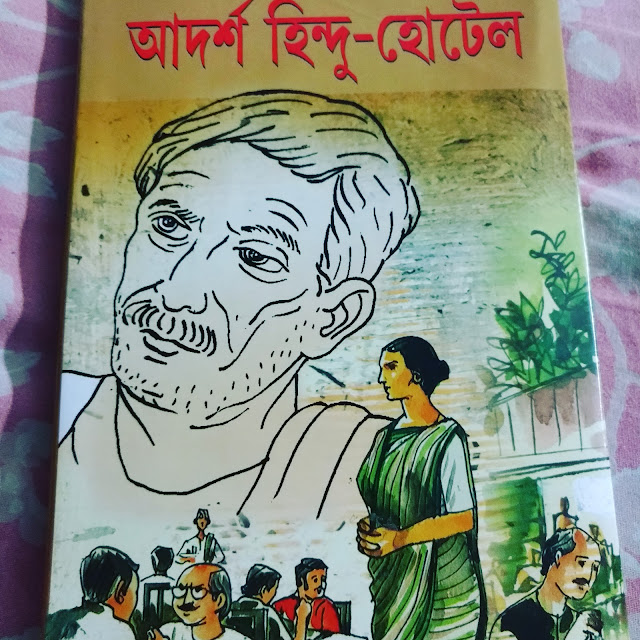Hanji Impression Exhibition- Korea's ancient paper art
Dignitaries lighting the traditional lamp
Cultural melting pots like India has always been significant for nations like Korea, considering the bond both share with their cultural past. Hanji Impression, an exhibition to introduce the traditional Korean paper Hanji, was organized at the Korean Cultural Centre in New Delhi. From the 16th January, 2015 to the 10th February, 2015, various works of art on Hanji paper will be on display, created by artists Park Yeo-Sang and Sharmi Chowdhury. Since, the occasion called for a cross cultural connect, the Ambassador of the Republic of Korea, H.E. Lee Joon-Gyu was there for the inauguration.
One of Park Yeo-Sang's works
Artists Sharmi Chowdhury and Park Yeo-Sang have used Hanji paper as the primary medium of expression on a diverse set of themes. While Chowdhury's works were based on the theme of 'femininity', by showcasing portraits of single mothers from both the countries, Yeo-Sang's works were to display the simplified expressions of people.
Park Yeo-Sang's work on display
" This is my fifth exhibition in India, which is composed of paper works made by Korean Traditional Dak pulp and Dak paper in relief and other various techniques.The Theme of my work is extremely simplified expression of people. Since in these works emotion of both Korean and Indian people are mixed, this exhibition is more meaningful to be held in India. I hope this exhibition will have a small contribution to cultural exchange between Korea and India," is what Park Yeo-Sang said about the works on display.
Sharmi Chowdhury's work on display
Sharmi Chowdhury was quoted as saying, "I have 1 installation and 25 portraits on display here with 'Ferminity' as the theme. With interest in the issue of Korean and Indian single mothers, I try to express the pains of their internal wounds. I'm confined to this issue as I was also brought up in a similar situation. In this exhibition the installation depicts an expressive mood of an unidentified single mother who carrying a dual personality as both mother and child is struggling to provide love to her loved ones."
One more of Sharmi Chowdhury's works on display
H.E. Lee Joon-Gyu addressed the gathering saying, "I am happy to announce the exhibition celebrating the "Hanji Impression" that brings together the artworks of 2 artists on one platform. He said we have organized various events including Hanji Festival last November and it was accepted very well by the Indian audience and art lovers. This year we want to organize more and more such activities, which not only promote art & culture of both the countries but will help in making Indo-Korean relationship better. The Hanji paper is best to showcase beauty of human emotions, love and pain. It presents the genius of an artist. To make a strong cultural bonding cultural ambassador does play an important role; therefore, we endeavour to organize more and more activities to grow friendship & strategic partnership further."
He went on to add, "I want to thank the artists who have contributed in making this project a success. I also want to thank everybody involved in organizing and making this project come true with their dedication and participation. These works of art will serve as an exceptionally valuable contribution and opportunity to experience the culture and strengthened friendship."
H.E. Lee Joon-Gyu lighting the lamp
There was some really good artistic performances on display, by artists Kim-Ye Eun and Hwang Sera. The evening was as melodious as artistic and traditional, in the way they captured the audience.
Artists Kim-Ye Eun and Hwang Sera
Hanji, as a traditional creation, dates back thousands of years. One of the oldest books, printed in the 14th century, on this special variety of paper, stands in exhibition today. The main quality of Hanji is to be able to evoke a sense of warmth and softness, due to it's origin from the bark of the Mulberry tree, grown widely in Korea. In fact, the meaning of Hanji is 'paper of Korea', literally! Whether made from traditional mechanical processes or perhaps on the machines, the unique touch of the paper is never lost in the process. This was actually what fascinated a great deal of art lovers at the event.
An art lover admiring the works on display
%2C%2BMadam%2BPoornima%2C%2BMr.%2BKim%2BKum-pyoung%2B(Director%2C%2BKCC)%2C%2BPark%2BYeo-Sang%2B(Korean%2BArtist)%2B%26%2BH.E.%2BLee%2BJoon-Gyu%2B(Ambassador%2C%2Bthe%2BRepublic%2Bof%2BKorea).JPG)
.JPG)
.JPG)
.JPG)
.JPG)
%2Binaugurated%2Bthe%2Bexhibition%2BHanji%2BImpression%2Bat%2Bthe%2BKorean%2BCultural%2BCentre.JPG)





Comments